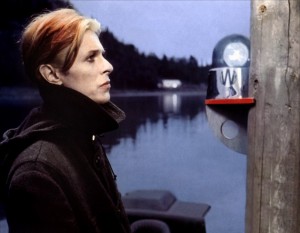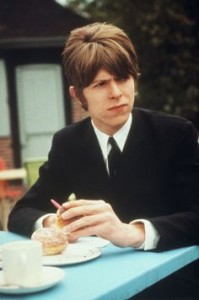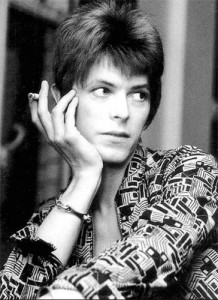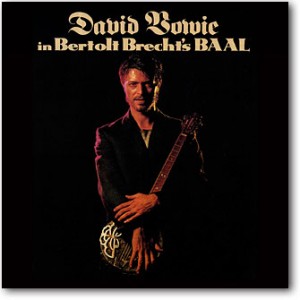I don’t often post book reviews here, but I was lucky enough to be sent review copies of the two newest additions to Bloomsbury’s always-interesting 331⁄3 series of books, David Bowie’s Diamond Dogs by Glenn Hendler (hopefully the spelling of his name will be consistent on the cover of the non-advance edition) and D’Angelo’s Voodoo by Faith A. Pennick, which I’ll cover in a different post.
Hendler’s book was of immediate interest; I’ve been listening to David Bowie’s Diamond Dogs (1974) for literally (though not continuously) half of my life. When I first started this blog, names for it that I rejected included ‘The Glass Asylum’ (from the song Big Brother) and ‘Crossroads and Hamburgers’ (actually based on a mishearing of a line in perhaps-best-ever-Bowie-song (or group of songs), Sweet Thing/Candidate/Sweet Thing (reprise) which is really ‘the crossroads of hamburgers and boys’, arguably a better name for a website, but perhaps overly misleading. The Glass Asylum already exists and is anyway not especially relevant. But I’ll name this site properly one day).
For years, Diamond Dogs was my favourite Bowie album, only pushed into second or third place (it changes quite often; currently #1 is Station to Station and #2 is Young Americans) because I listened to it so much that it had become hard to listen to without skipping bits.
But despite listening to it to the point where I felt like I knew every second of the album, and reading a lot about Bowie over the years (though not the lyrics apparently – I presume I just thought I knew them), Glenn Hendler’s little (150 page) book taught me a lot that I didn’t know and hadn’t considered – and, even better – sent me back to the album with fresh ears, and made me fall in love with it all over again.
As a semi-professional music journalist myself (Hendler, incidentally, isn’t one; he’s a Professor of English, though he writes on a variety of cultural & political topics) I’m very aware that there are many people who believe that music writers should focus solely on the music at hand and leave themselves out of it. This is, thankfully, not how the 331⁄3 series works, and in fact none of my own favourite music writers – Charles Shaar Murray, Jon Savage, Caitlin Moran, Lester Bangs etc etc – write from any kind of neutral position. And really, anything about music beyond the biographical and technical information is subjective anyway, so better to be in the hands of someone whose writing engages you. For me, the test of good music journalism (not relevant here, but will be for the Voodoo review) is whether the writer can make you enjoy reading about music you don’t already know, or maybe don’t even like – something which all of the aforementioned writers do.
331⁄3 books always begin with something about the writer’s history with the music that they are talking about – and it’s surprising the difference this makes to a book. For me, reading the opening chapter of Mike McGonigal’s My Bloody Valentine’s Loveless (Loveless came out when I was at high school and was very much a fan of the scene that had grown up in the long gaps between MBV’s releases; Ride, Lush, Slowdive, Curve etc etc etc) was such a strange experience – he describes encountering the band’s music in what comes across very much as a grunge, ‘alt-rock’ milieu – that, although I liked the book very much, it felt so far removed from how I saw the band that it was oddly dislocating, like it would be to read a sentence that began “Wings frontman Paul McCartney” or, more pertinently to this article, “David Bowie, vocalist of Tin Machine.”
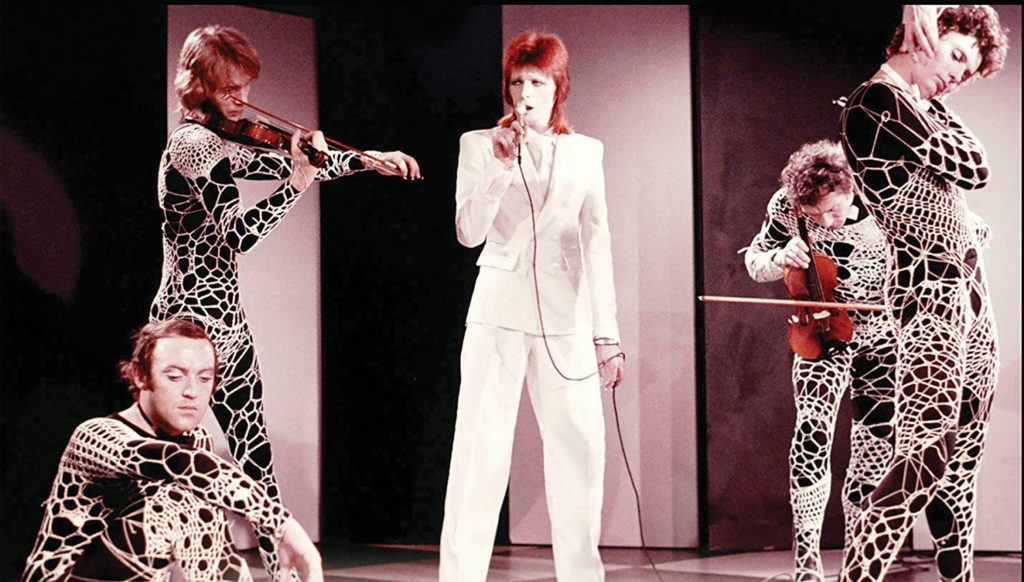
Anyway; in this case, the author’s relationship with his subject stretches all the way back to the his first real encounter with the music – and strangeness – of Bowie, when as a 12 year old, he saw The 1980 Floor Show on NBC’s Midnight Special, filmed in 1973, which acted as a kind of fanfare for the as-yet-unreleased Diamond Dogs. This setting is important, because anyone coming to Bowie now has grown up with all of his incarnations – and the fact that he had various different personae – as background. I first knew him as the barely-weird-at-all Bowie of Let’s Dance, a pop star who was not noticeably stranger or even (stylistically/musically at least) obviously older-looking than the other acts in the charts at the time (also in the top ten during Let’s Dance’s reign at number one were the Eurythmics (Sweet Dreams (are Made of This)), Bonnie Tyler (Total Eclipse of the Heart) and Duran Duran (Is There Something I should know). The fact (not in itself so unusual in the UK) that Bowie had an earlier existence as some kind of glam rock alien of indeterminate gender was almost invariably commented upon by DJs and TV presenters in the 80s and that is a very different thing from becoming aware of him when he was a glam rock alien of indeterminate gender, especially since – in the USA at least – he was yet to really break and in ’74 was a cult figure with a surprisingly high profile, rather than one of the major stars of the previous two years.
In his book, rather than making a chronological, song-by-song examination of the album (though he does dissect every song at some point), Hendler examines the array of different inspirations (musical, literary, cultural, political, technical) that informed the writing and recording of the album, as well as looking at where it lies in relation to his work up to that point. Those inspirations; Orwell’s Nineteen Eighty-Four (Bowie’s original intention was to write a musical based on the book, but after that was vetoed by Sonia Orwell he incorporated the material he’d written into Diamond Dogs), Andy Warhol and the superstars of his Factory, some of whom were then in the UK production of his play Pork, the gay subculture of London and the post-apocalyptic gay subculture of William Burroughs’s novels, Burroughs & Brion Gysin’s ‘cut-up’ technique, Josephine Baker, A Clockwork Orange, the soul and funk that was to take centre stage on Young Americans, the Rolling Stones, the post-industrial decay and unrest of Britain in the mid-70s – are all audible to varying degrees on Diamond Dogs, a kind of linguistic stratigraphy* that mirrors the album’s layers of sounds and instruments and makes it both aurally and figuratively one of Bowie’s most richly dense albums.
*thankfully, Glenn Hendler never writes as pretentiously as this

When reading the book, two phrases other writers wrote about the Diamond Dogs era came to mind, which I think reinforce Hendler’s own conclusions about the album;
it […] single-handedly brought the glam rock era to a close. After Diamond Dogs there was nothing more to do, no way forward which would not result in self-parody or crass repetition” David Buckley – The Complete Guide To The Music of David Bowie*, Omnibus Press, 1996, p.37
*incidentally, a intriguing detail reported by Buckley but sadly not mentioned in Hendler’s book is that the territory of ‘Halloween Jack’ (the only named member of the Diamond Dogs) who ‘lives on top of Manhattan Chase’ was inspired by stories told by Bowie father (who at one point worked for Barnardo’s) of homeless children living on the rooftops in London.
And, even more to the point:
The last time I’d seen him [Bowie] had been the last day of 1973, and he’d been drunk and snooty and vaguely unpleasant, a game player supreme, a robot amuck and careening into people with a grin, not caring because after all they were only robots too; can trash be expected to care about the welfare of other trash?
Since then there’d been Diamond Dogs, the final nightmare of glitter apocalypse Charles Shaar Murray, ‘David Bowie: Who was that (un)masked man?’(1977) in Shots From The Hip, Penguin books, 1991, p.228
This sense of Diamond Dogs’ apocalyptic extremism is addressed throughout Hendler’s book; the record may not be a concept album in any clear, narrative sense (indeed, the Diamond Dogs, seemingly some kind of gang, are introduced early on but only mentioned once thereafter), but its fractured, non-linear progression and its musical maximalism (should be a thing if it isn’t) actually imbues the album with a far stronger overall identity than Ziggy Stardust or Aladdin Sane had before it. In fact it works more like a kind of collage than a conventional story. related to this, an important point that the author brings up early on concerns the role of the Burroughs/Gysin cut up technique. Although this is often used to explain (or rather, not explain) the more lyrically opaque moments in Bowie’s 70s work, Hendler stresses that this was a creative tool rather than a kind of random lyric generator. As with the use of Eno’s Oblique Strategies cards on Low a few years later, the cut up was used as a way of stimulating the imagination, not bypassing it. The lyrics to songs like Sweet Thing clearly benefit from the use of randomised elements, but these were then used to create lyrics which have an internal sense but which crucially also scan and rhyme when needed, something that would be fairly unlikely in a purely random process. The result is something like the experimental fiction that JG Ballard had pioneered earlier in the decade (most famously in The Atrocity Exhibition) which come across as sometimes-gnomic bulletins from the unconscious, filtered through a harsh, post-industrial geography, but never as random gibberish. What Hendler draws attention to (that I had never consciously noticed in all my years of listening) is the strangely dislocated perspectives of the album’s songs, where the relationship between the narrator/subject/listener are rarely clear-cut and often change within the course of a single song.

The most obvious example is in one of the book’s best parts, the exploration of Sweet Thing/Candidate/Sweet Thing (reprise) (the crossroads and hamburgers song). Although, lyrically, the song’s focus is all over the place, it never feels disjointed, and until reading about it, I’d never really considered how ambiguous it all is. Although seen through a kind of futuristic lens, thanks to the album’s loose concept (established by the album’s sinister and slightly silly intro, Future Legend), when I listen to it now, it feels very much like a condensed/compressed 70s version of Hubert Selby Jr’s notorious Last Exit To Brooklyn (1964) with its shifting viewpoints and voices and its pitiless depiction of what was – for all the novel’s controversy – the normal life for many people in the underclass of any big city. Like Selby, Bowie doesn’t help the audience by indicating who is speaking or when but places us in the centre of the action (essentially violent gangs and male prostitutes), making the listener in fact, (at times) the ‘sweet thing’ of the title (though at other times Bowie adopts that role too) not that that had ever occurred to me before. It’s a mixture of menace, sleaze and impending violence, the ‘glam’ sheen of glam rock rendering it all at once romantic and dangerous – and full of unexpected details. I had obviously always heard the line ‘Someone scrawled on the wall “I smell the blood of Les Tricoteuses”’ but I hadn’t bothered to find out what it was he said or what ‘Les Tricoteuses’ were (the old ladies who reportedly/supposedly knitted at the foot of the guillotine during the Reign of Terror that followed the French Revolution, it turns out) and therefore didn’t pick up on the way the percussion becomes the military marching snare drum. Bowie was always about theatre, but this song absorbs the theatrical elements so seamlessly into its overall structure that drama/melodrama, sincerity/artifice, truth/deceit. seduction/threat become one vivid and affecting whole. I would say the song is bigger than the sum of its parts, but there are so many parts, going in (and coming from) so many different directions that I don’t think that’s true – but it somehow holds together as a song or suite of songs; almost a kind of microcosm of the album itself.
Elsewhere, my other favourite song, We Are The Dead (directly inspired by Nineteen Eighty-Four) is dissected brilliantly, highlighting the way (again, I hadn’t noticed) that Bowie absorbs the key ideas of the novel into his own framework; this is one of the few songs aside from the title track that mentions the Diamond Dogs and, without being jarring (or at least no more than intended) sets the originally very 1940s characters of Winston Smith and Julia (not that they are named) and his timeless themes of power, sex (and the relationship between the two) and totalitarianism into the 70s post-apocalyptic dystopia that owes more to Burroughs and the street-life milieu of Lou Reed’s lyrics than it does to Orwell himself. Like the use of cut-up techniques to stimulate his own imagination, Bowie’s absorption of these disparate elements created something new and powerful that concentrated Bowie’s interests and obsessions as well as holding up a distorting mirror to the times in which it was created.
But this has gone on long enough and, rather than rewriting or paraphrasing Hendler’s book – one of the best books on Bowie I’ve read – I’ll go and read it again while listening to Diamond Dogs.
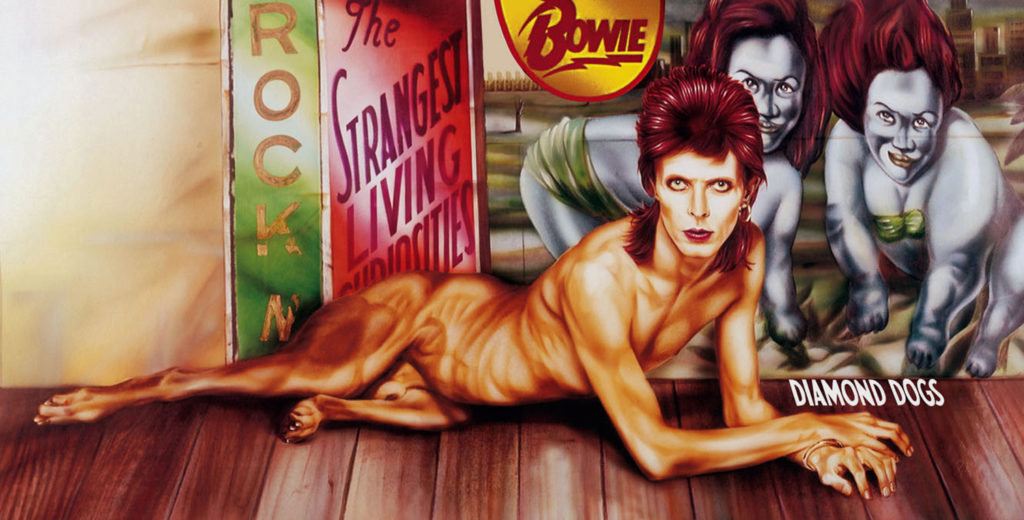


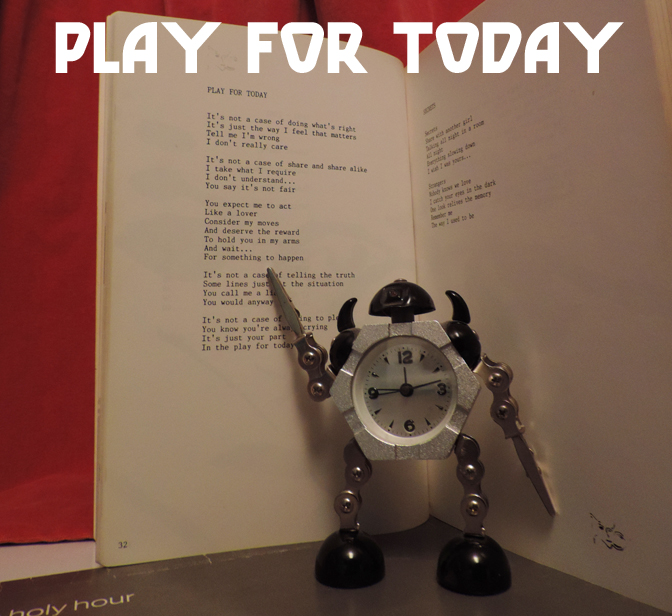
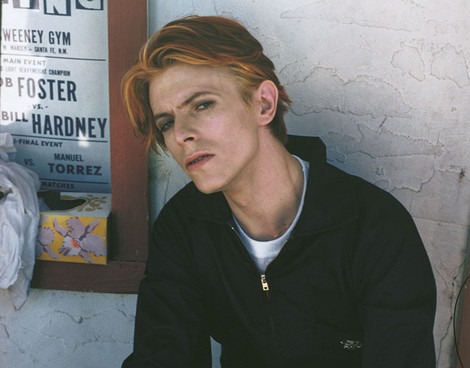
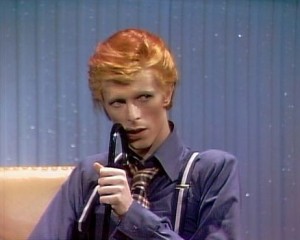 The Gouster Sessions 1974 (fragment) – This is so frustrating, tantalising and great; the song fragments; Shilling the Rubes, I Am A Lazer, After Today and the rough version of Young Americans come from what is currently my favourite Bowie period and the recording has just a little more grit than the finished album. Bowie and his band sound on top form and the bits of studio banter sound amazingly relaxed and fun given Bowie’s apparent drug intake and exhaustion during that time. I wish the full sessions would turn up and be released.
The Gouster Sessions 1974 (fragment) – This is so frustrating, tantalising and great; the song fragments; Shilling the Rubes, I Am A Lazer, After Today and the rough version of Young Americans come from what is currently my favourite Bowie period and the recording has just a little more grit than the finished album. Bowie and his band sound on top form and the bits of studio banter sound amazingly relaxed and fun given Bowie’s apparent drug intake and exhaustion during that time. I wish the full sessions would turn up and be released. (and Diamond Dogs in general) for years (its only fairly recently been supplanted as my favourite Bowie album by Young Americans) and I’m not sure that he ever sang a song better than this. The part in the first verse where he sings ‘I looked at you and wondered if you saw things my way’ over the ominous churchy organ part (so to speak) is to me one of the greatest moments in all Bowie-dom. Hugely atmospheric, perfectly articulated and chilling/moving/ominous. For years I thought the chorus (or semi-lack thereof) let the song down, but I’m not so sure now.
(and Diamond Dogs in general) for years (its only fairly recently been supplanted as my favourite Bowie album by Young Americans) and I’m not sure that he ever sang a song better than this. The part in the first verse where he sings ‘I looked at you and wondered if you saw things my way’ over the ominous churchy organ part (so to speak) is to me one of the greatest moments in all Bowie-dom. Hugely atmospheric, perfectly articulated and chilling/moving/ominous. For years I thought the chorus (or semi-lack thereof) let the song down, but I’m not so sure now.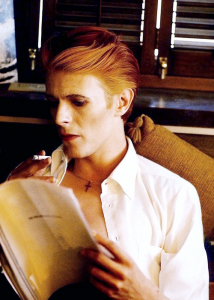 Word on a Wing (from Station to Station, 1976) – Speaking of ideologically dubious Bowie material, Station to Station must be one of the creepiest albums ever recorded by a mainstream pop artist; not least because its melange of decadent European culture, emotional withdrawal and exhaustion and overtones of religious and magical yearning are imbued with a dark romanticism. Word on a Wing is just beautiful and weary though.
Word on a Wing (from Station to Station, 1976) – Speaking of ideologically dubious Bowie material, Station to Station must be one of the creepiest albums ever recorded by a mainstream pop artist; not least because its melange of decadent European culture, emotional withdrawal and exhaustion and overtones of religious and magical yearning are imbued with a dark romanticism. Word on a Wing is just beautiful and weary though. seems not to have been (in his music at least, but see below) an especially nostalgic person. But writing the music for the TV adaptation of Hanif Kureishi’s 70’s-set drama allowed him to look at his early work as others saw it, and this breezy yet yearning song is extremely moving, if you’re me.
seems not to have been (in his music at least, but see below) an especially nostalgic person. But writing the music for the TV adaptation of Hanif Kureishi’s 70’s-set drama allowed him to look at his early work as others saw it, and this breezy yet yearning song is extremely moving, if you’re me.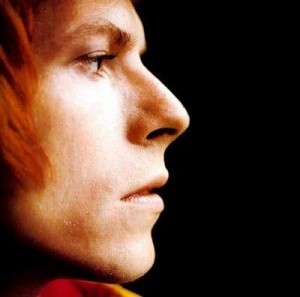 Lady Stardust (from Ziggy Stardust & the Spiders from Mars, 1972) – A beautiful, brilliantly produced and performed song that exemplifies everything glam-era Bowie stood for; sexy, glamorous, gender-ambiguous and an immaculate pop song too. Sigh.
Lady Stardust (from Ziggy Stardust & the Spiders from Mars, 1972) – A beautiful, brilliantly produced and performed song that exemplifies everything glam-era Bowie stood for; sexy, glamorous, gender-ambiguous and an immaculate pop song too. Sigh.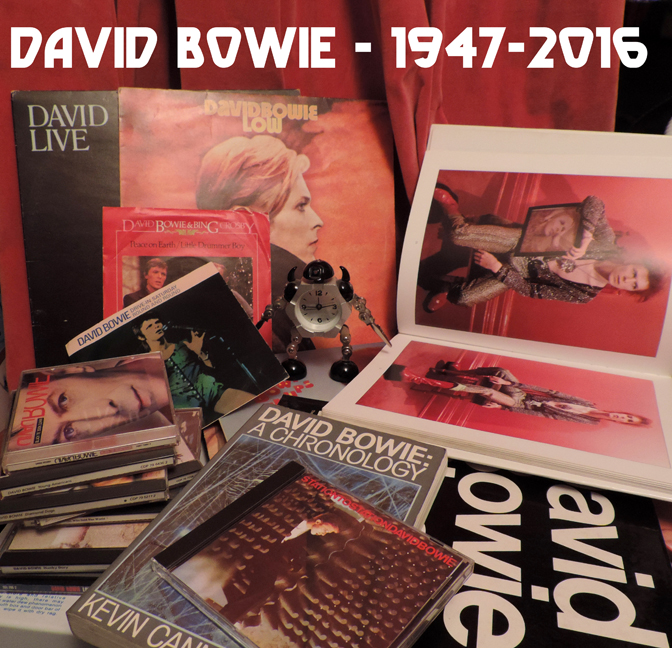

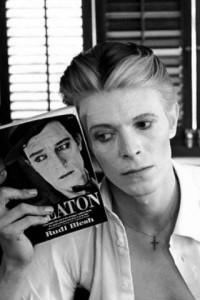
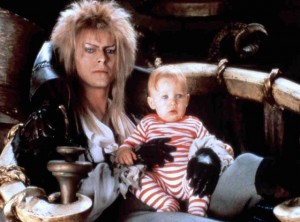 I’ve been listening to David Bowie for more than half of my life, but like most people of my generation, I’ve been very aware of him for much longer than that.
I’ve been listening to David Bowie for more than half of my life, but like most people of my generation, I’ve been very aware of him for much longer than that.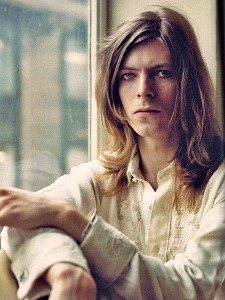 There were two (as I remember) more or less simultaneous but separate things that led me in my late teens to Bowie’s music; a book about Lou Reed (I was already a big Velvet Underground fan) which led me onto Queen Bitch and therefore Hunky Dory (for a long time my favourite album) and seeing The Man Who Fell To Earth on TV and therefore listening to Low, which was in my mother’s record collection; and loving it.
There were two (as I remember) more or less simultaneous but separate things that led me in my late teens to Bowie’s music; a book about Lou Reed (I was already a big Velvet Underground fan) which led me onto Queen Bitch and therefore Hunky Dory (for a long time my favourite album) and seeing The Man Who Fell To Earth on TV and therefore listening to Low, which was in my mother’s record collection; and loving it.